Good day dear fermentation fans,
yes, it’s been a while again … but today it’s finally time again. Fermented onions can be served all year, to many dishes. Regardless of whether it is for the barbecue season, which is unfortunately coming to an end soon, or as an ingredient in the salad for that extra something.
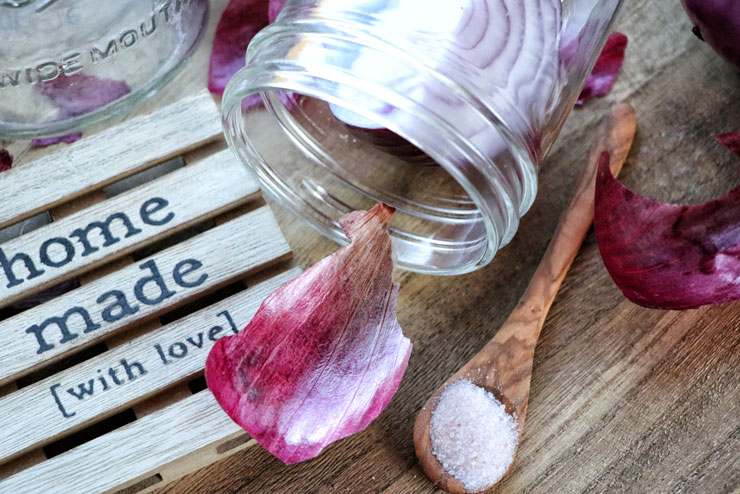 You want more delicious recipes around the topic “fermented vegetables”? Then feel free to visit my blog and be inspired. I’m glad to see you there 🙂
You want more delicious recipes around the topic “fermented vegetables”? Then feel free to visit my blog and be inspired. I’m glad to see you there 🙂
For this tasty fermentation recipe you need these ingredients: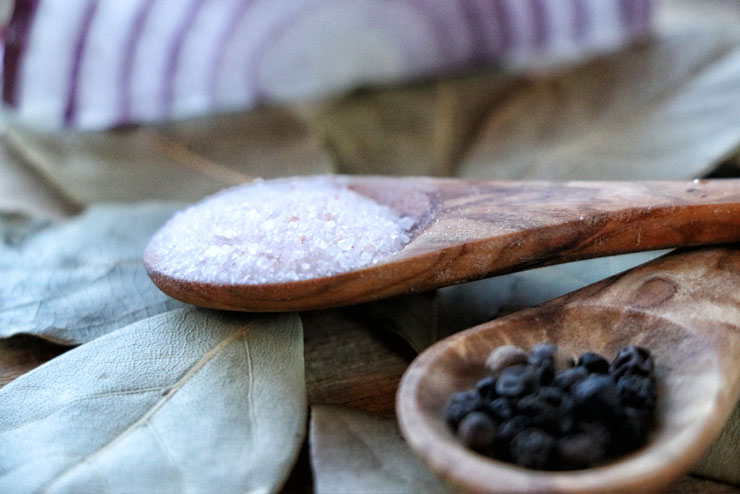
- 500 g red onions (select the largest possible onions)
- 2 bay leaves
- 1 tbsp Himalaya rock salt* (You can simply order your rock salt here* online)
- ½ tsp peppercorns
- about 500 ml of water
Variation: You may like to be creative with more ingredients, for example, add ¼ tsp of mustard seeds, cloves of garlic or much more.
useful accessories:
700 ml glass with lid with fermentation lid* and glass weight* – our special fermenting glasses and the matching accessories you can order here* online.
You have all the ingredients ready? Then we start immediately:
- Peel the onions and cut into thin strips.
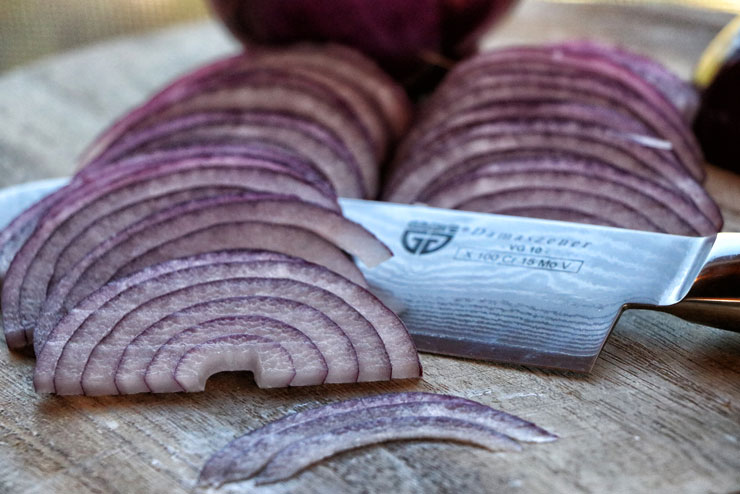
- Put the water with the rock salt in a bowl and mix well until the salt has dissolved.
- Now you give the peppercorns with the bay leaves first in the fermenting glass.
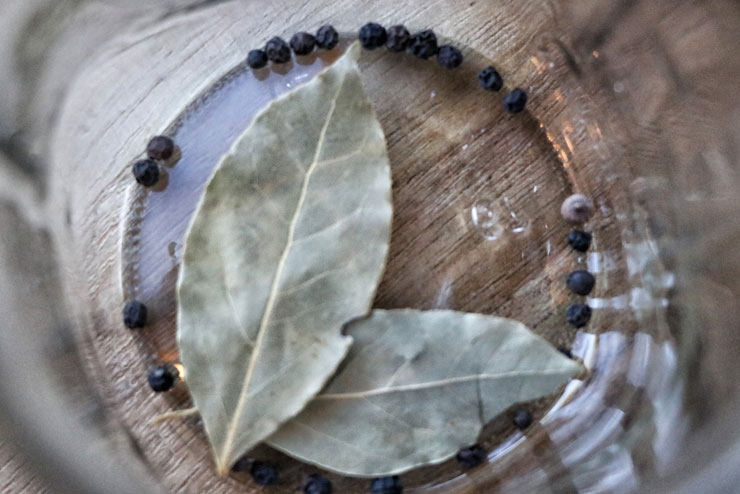
- Then put the finely sliced onion slices in the glass.
- Now fill up the fermentation glass with the salt water, but leave room for the glass weight at the top so that it fits exactly.
- Now screw the fermentation attachment onto the glass and let stand at room temperature for about 2 weeks.
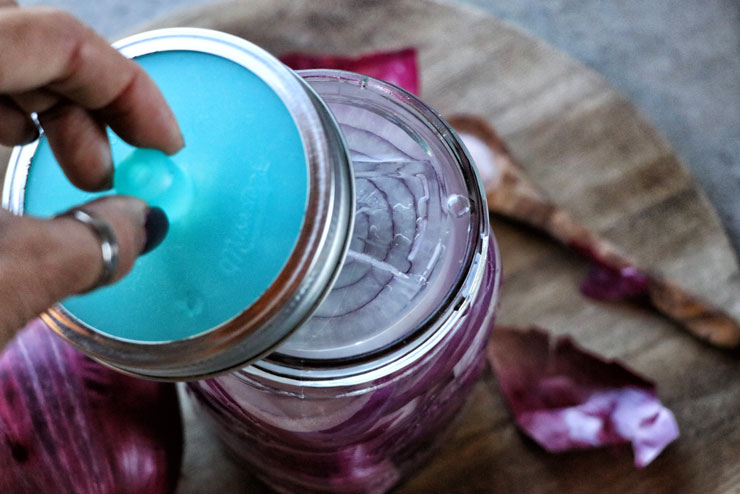
Fermented onions
Print RecipeIngredients
- 500 g red onions (select the largest possible onions)
- 2 bay leaves
- 1 tbsp Himalaya rock salt
- ½ tsp peppercorns
- about 500 ml of water
Instructions
Peel the onions and cut into thin strips.
Put the water with the rock salt in a bowl and mix well until the salt has dissolved.
Now you give the peppercorns with the bay leaves first in the fermenting glass.
Then put the finely sliced onion slices in the glass.
Now fill up the fermentation glass with the salt water, but leave room for the glass weight at the top so that it fits exactly.
Now screw the fermentation attachment onto the glass and let stand at room temperature for about 2 weeks.
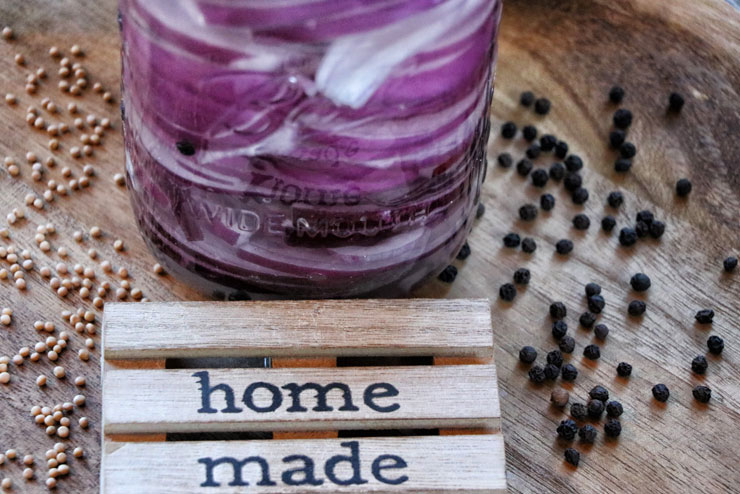
Do you still have questions about kombucha, kefir and fermented vegetables? Then have a look in my new book “How to ferment properly”. Here I´ve brought in my many years of experience in 4 chapters to summarize the most important facts.
In addition to valuable tips and detailed instructions, you will also find a selection of my favorite recipes. Further information about the book you can find here*.
Have fun and enjoy!
I am looking forward to see you again for my next recipes.
Petra
Watch also this video and many more regarding Kefir and Kombucha on my Youtube channel…
* This is an Affiliate-Link – Affiliate-Links are sponsored Links

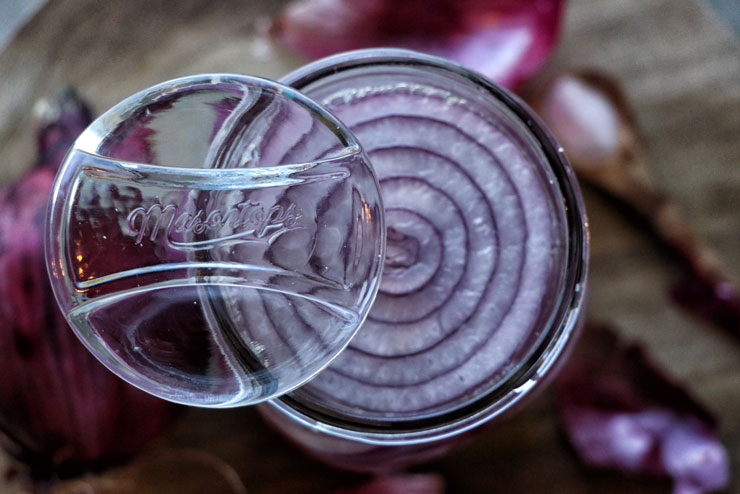
6 Comments
Renate
Monday July 20th, 2020 at 09:40 PMSuper Idee, Gemüse zu fermentieren!
Petra
Wednesday July 22nd, 2020 at 01:34 PMLiebe Renate,
vielen Dank!
Liebe Grüße
Petra & Stephan Kriegener
Barbara
Sunday August 30th, 2020 at 04:35 PMHallo, esse ich fermentierten Zwiebel nur als Beilage, oder ist fermentierter Zwiebel auch zum Kochen geeignet?, also z.B., wenn ich in einem Rezept Zwiebel anbrate, kann man dann fermentierten Zwiebel auch nehmen?? Danke Barbara
Petra
Monday August 31st, 2020 at 12:40 PMHallo Barbara,
vielen Dank für Ihren Kommentar.
Selbstverständlich können Sie fermentierte Zwiebeln auch zum anbraten nutzen. Allerdings gehen dann die wertvollen Bakterien mit denen die Zwiebeln während des Fermentationsprozessen angereichert wurden verloren. Die fermentierten Zwiebeln roh zu genießen ist im Hinblick auf die Milchsäurebakterien besser:-)
Viel Freude beim Fermentieren!
Herzliche Grüße
Petra & Stephan
Martin
Sunday September 19th, 2021 at 09:22 AMHallo, wie bewahre ich die Zwiebeln am besten längerfristig auf? Also nach den 2 Wochen? Lass ich die einfach im Glas stehen?
Petra
Monday October 18th, 2021 at 01:45 PMLieber Martin,
vielen Dank für Ihren Kommentar.
Bei Zimmertemperatur fermentieren die Zwiebeln weiter und werden immer weicher bis sie teilweise etwas matschig werden können. Im Kühlschrank oder kühlen Keller können Sie die Geschwindigkeit dieses Vorganges verringern und die fermentierten Zwiebeln länger lagern.
Herzliche Grüße senden Ihnen
Petra & Stephan Kriegener